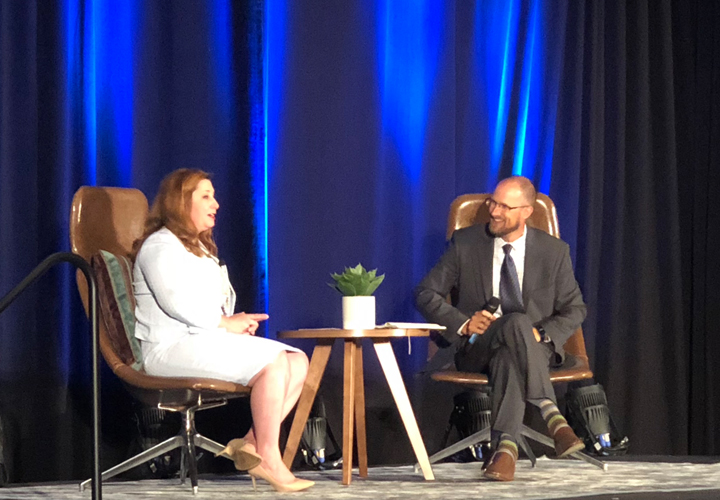The changing face of colleges – and college students – in Missouri

Technology has changed the world of higher education in myriad ways, from how information is shared with students to the environment in which they receive it – and even what information is most important for them to be receiving.
Missouri’s ability as a state to grow and adapt to those changes to better meet the needs of schools, employers, and individuals will be critical to the state’s success now and in the coming decades.
That was the message on October 3 during the Education Outlook from the Springfield Business Development Corporation, the economic development arm of the Chamber.
The event centered on a conversation with Missouri Commissioner of Higher Education Zora Mulligan moderated by Chamber Senior Vice President of Economic Development Ryan Mooney. Mulligan brings unique credentials to the job, having previously served as both chief of staff for the University of Missouri System and as executive director of the Missouri Community College Association.
Tomorrow's talent
Mulligan said the state has been studying how to better address workforce issues from the standpoint of education for more than a year through its Talent for Tomorrow initiative.
The initiative grew from a workforce needs assessment, but it has since become a statewide discussion with business and community leaders about how to meet the state’s workforce needs, from K-12 schools through higher education and into the labor market.
Mulligan said it has become clear that a broader solution is needed to address two key issues. One is the need for more skilled workers, which is handled through education, as both higher levels of attainment and more specific training are needed.
This could mean a rethink in the state’s approach to the $100 million it spends each year in financial aid, such as a new focus on aid for adult learners and a shift in how those programs are structured.
“For those adults, we need to be honest with ourselves and say they don’t have four or six years to pursue a degree, so how can they pursue a program that is meaningful for them?” she said. “If someone is drowning and we throw them a rock, it doesn’t help.”
She also noted how higher education itself is changing to meet the demands of students and businesses. “Things are changing all around us, and we can’t predict what those changes will be,” Mulligan said. “Making those traditional educational experiences more connected to the workforce will be even more important – have they had a real-life work experience, do they have certifications. If schools can adapt more quickly, they’re going to be more successful.”
Keeping the workforce local
The second key issue Mulligan noted was talent attraction and retention – in short, we need more people working in our area. It’s been a focus of the Chamber for a long time, and it was the focus of remarks by Chamber Workforce Development Manager Alex Greiwe to begin the Outlook event.
She noted the Chamber’s Talent Attraction Initiative, housed at LiveInSpringfieldMo.com, and the way The Network for Young Professionals reaches out to targeted groups of college students to encourage them to stay in the area after graduation.
Greiwe mentioned the work to fill the talent pipeline with students and adults who have the skills employers are seeking in the people they want to hire. To fill the pipeline, the Chamber continues its work with the GO CAPS program, exposing high school students and teachers to the job opportunities available in our region. Greiwe also recognized area colleges and universities for meeting the ongoing talent and training needs of area employers.
And she talked about the Chamber’s advocacy work for state-level issues such as funding for important education and workforce programs, and local issues like the successful bond issue for Ozarks Technical Community College last April.
But as Greiwe noted, all these efforts are part of a multifaceted approach made possible by support from Chamber members and SBDC Investors committed to economic development.
“If we’re going to be successful in creating jobs in our region, we also have to work upstream on creating a quality place that can attract and retain talent,” she said. “Our ability to attract, retain, and develop talent will determine our economic vitality in the next 5, 10, and even 20 years.”

